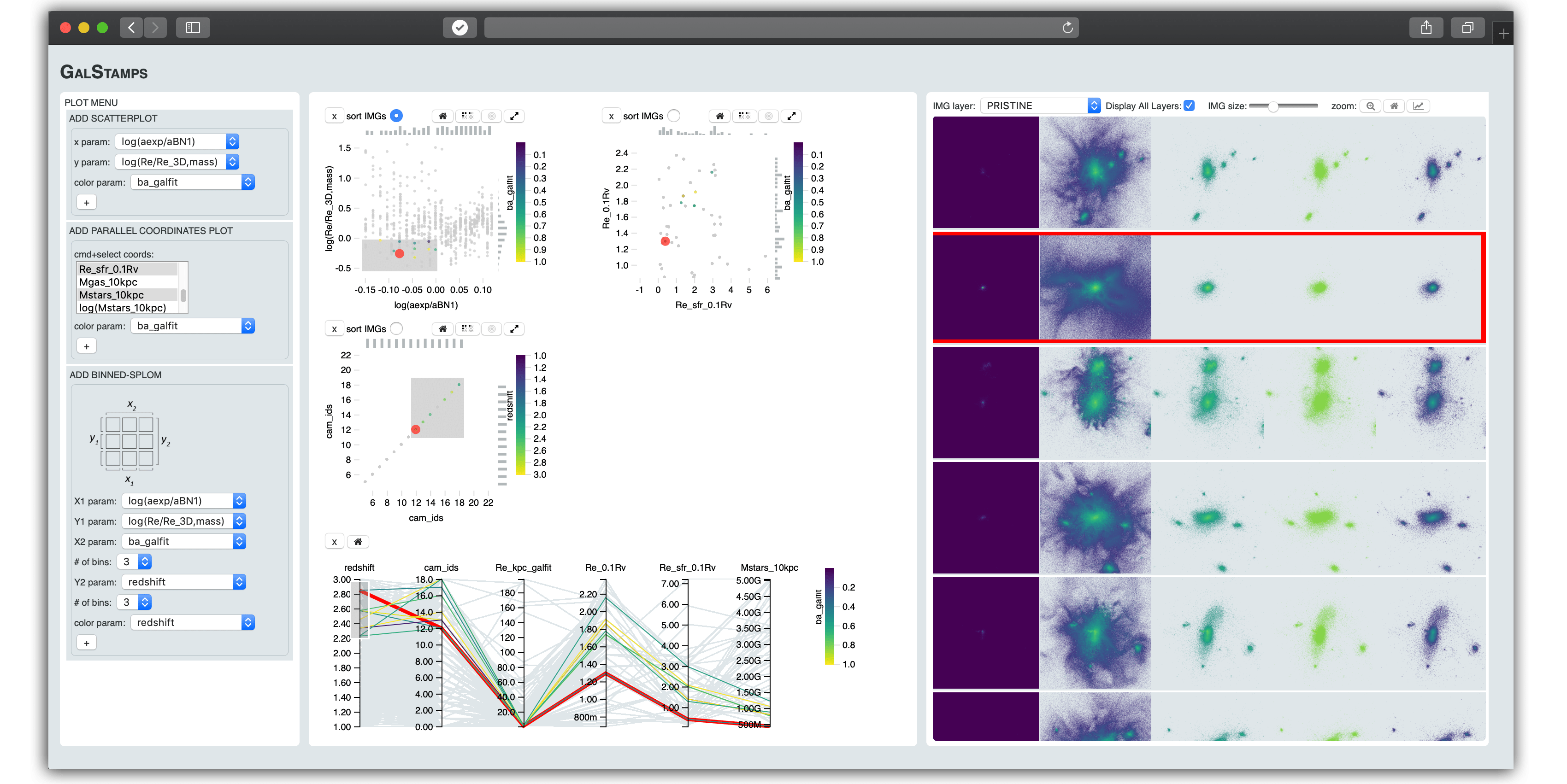
Abstract
One way astronomers and astrophysicists study galaxy formation and evolution is by analyzing and comparing real galaxy observations, captured by telescopes, and simulated galaxy observations, generated from theoretical models. They approach this through a combination of statistical and visual analysis, conducted either independently or sequentially. During the first year of an ongoing design study with astronomers and astrophysicists, we explored approaches to integrating statistical and visual analysis to enhance understanding of these data. Contributions from this stage of the study include a data and task abstraction for statistically and visually analyzing real and simulated galaxy observations, as well as an initial design, implemented in a prototype called GalStamps, and evaluated through two case studies with domain experts.Citation
Nina McCurdy,
Miriah Meyer
GalStamps: Analyzing Real and Simulated Galaxy Observations
IEEE Visualization Short Papers, 276-280, doi:10.1109/VISUAL.2019.8933671, 2019.
BibTeX
@inproceedings{2019_shortpapers_galstamps,
title = {GalStamps: Analyzing Real and Simulated Galaxy Observations},
author = {Nina McCurdy and Miriah Meyer},
booktitle = {IEEE Visualization Short Papers},
publisher = {IEEE},
doi = {10.1109/VISUAL.2019.8933671},
pages = {276-280},
year = {2019}
}
Acknowledgements
We thank our collaborators at the University of California Santa Cruz. This work was supported in part by NSF grant GRF-1747505.